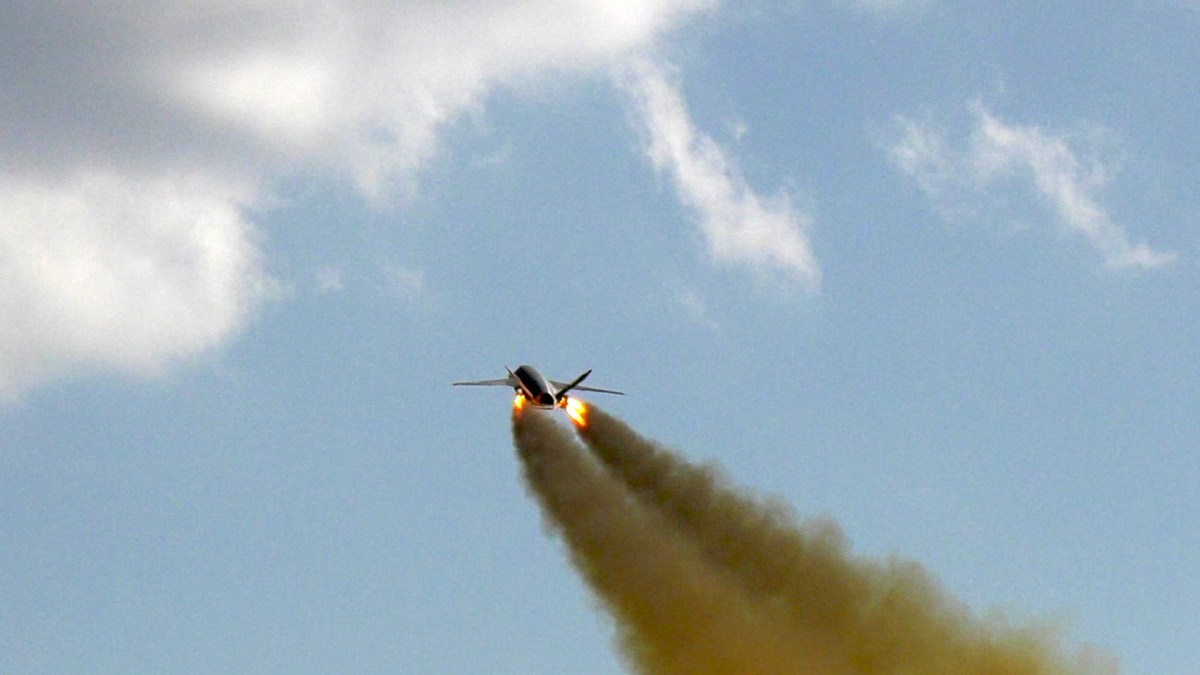Originally published Navy soliciting solutions for networking CCA drones on by https://defensescoop.com/2024/11/22/navy-rfs-c2-solutions-network-cca-drones-nswc-crane/ at DefenseScoop
Close
Naval Surface Warfare Centers (NSWC) Crane is “seeking solutions that would successfully integrate existing autonomous air vehicle platforms and advanced communication prototypes allowing for secure tactical communications between multiple similarly configured platforms and provision networked data capabilities,” officials wrote.
Listen to this article
0:00
Learn more.
This feature uses an automated voice, which may result in occasional errors in pronunciation, tone, or sentiment.

The Department of the Navy is issuing a request for solutions from industry to bring forth technologies that could better connect the U.S. military’s next-generation drones known as collaborative combat aircraft (CCA), according to an announcement posted Friday.
The RFS is being issued via the Expeditionary Missions Consortium-Crane (EMC2), and vendors must be members of the organization to respond.
The aim is “to address the need Naval Surface Warfare Centers (NSWC) Crane has in seeking solutions that would successfully integrate existing autonomous air vehicle platforms and advanced communication prototypes allowing for secure tactical communications between multiple similarly configured platforms and provision networked data capabilities,” according to the notice.
The effort is also intended to address a requirement from the Office of the Under Secretary of Defense for Research and Engineering, officials noted.
The Pentagon plans to award multiple other transaction agreements for the initiative.
OTAs are intended to cut through the bureaucratic red tape that’s often associated with Defense Department acquisition efforts and make it easier to onboard industry partners, especially non-traditional vendors.
Industry responses to the request for solutions are due Dec. 13.
The release of the RFS comes as the Navy, Marine Corps and Air Force are each pursuing next-generation drones that are much autonomous than traditional unmanned aerial systems.
Naval Air Systems Command has launched a new effort to integrate an AI-enabled pilot with one of its aerial targets, laying the foundation for the service’s plans to introduce autonomous flight capabilities into its aviation fleet. The Navy awarded a contract to Shield AI that will allow the company to integrate its Hivemind technology onto BQM-177A subsonic aerial targets. Under the other transaction agreement, Shield AI will deliver a prototype test bed and conduct a technical demonstration in late 2025.
The Marine Corps, meanwhile, is conducting research, development, test and evaluation to inform its Penetrating Affordable Autonomous Collaborative Killer-Portfolio (PAACK-P) program. Last month, the service announced that recent flight testing of its jet-powered XQ-58A Valkyrie drone saw the system use common tactical data links to share targeting information with F-35 stealth fighters.
The Air Force earlier this year tapped Anduril and General Atomics for the development-for-production phase of its CCA program. It also put five vendors on contract to develop autonomy for the drones. The service recently wrapped up a critical design review for Increment 1 systems.
The military services want their respective robotic wingmen to have some common aircraft architecture, communications links, autonomy architecture and ground control segments.
Last year, a senior Navy officer said the service was seeking the ability and permission to take control of Air Force CCA drones — and reciprocate — in the future.
More Scoops
Latest Podcasts
Originally published DefenseScoop

